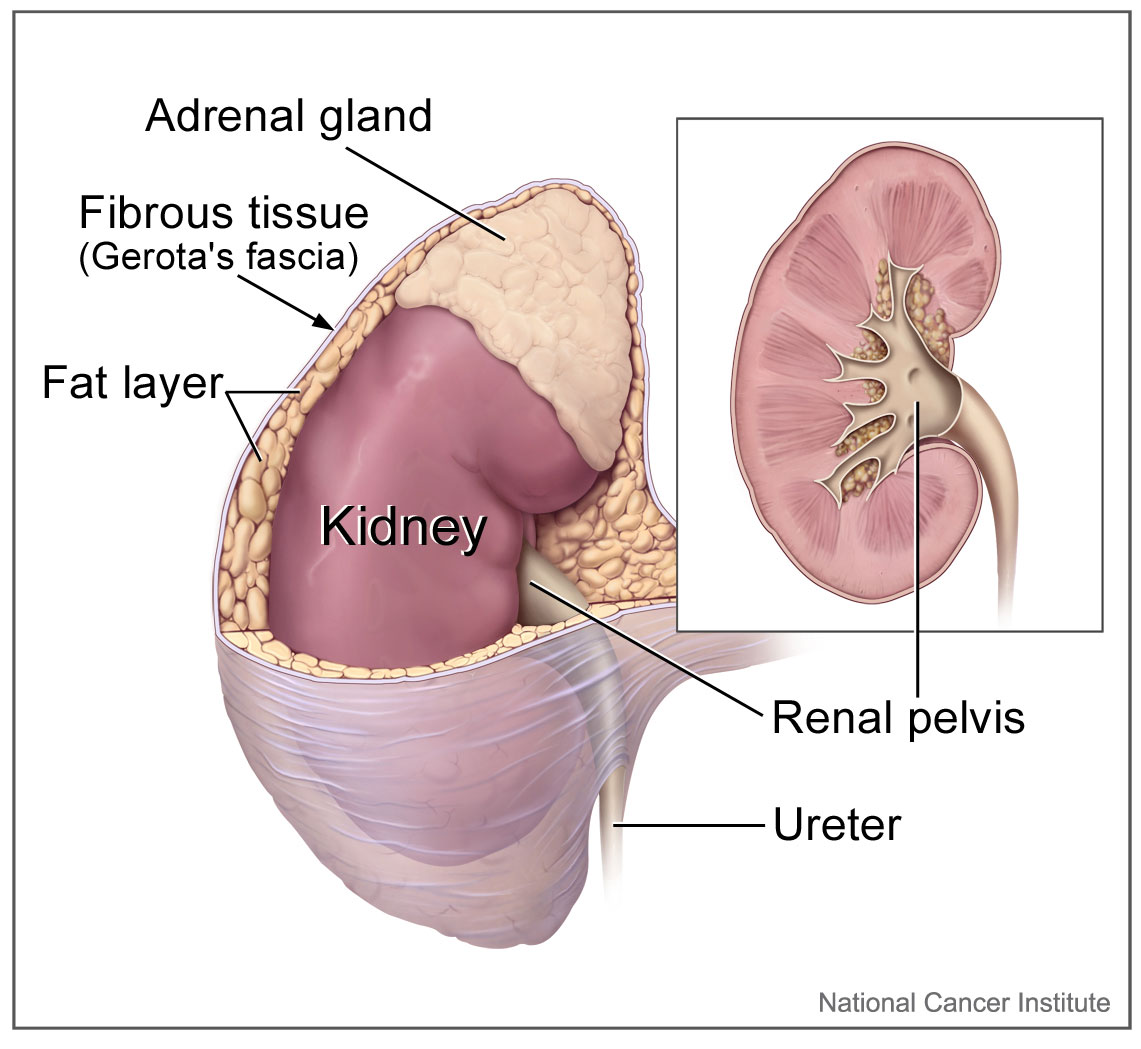[1]
Willatt J, Chong S, Ruma JA, Kuriakose J. Incidental Adrenal Nodules and Masses: The Imaging Approach. International journal of endocrinology. 2015:2015():410185. doi: 10.1155/2015/410185. Epub 2015 Apr 29
[PubMed PMID: 26064109]
[2]
Zeiger MA, Thompson GB, Duh QY, Hamrahian AH, Angelos P, Elaraj D, Fishman E, Kharlip J, American Association of Clinical Endocrinologists, American Association of Endocrine Surgeons. American Association of Clinical Endocrinologists and American Association of Endocrine Surgeons Medical Guidelines for the Management of Adrenal Incidentalomas: executive summary of recommendations. Endocrine practice : official journal of the American College of Endocrinology and the American Association of Clinical Endocrinologists. 2009 Jul-Aug:15(5):450-3
[PubMed PMID: 19632968]
[3]
Zeiger MA, Siegelman SS, Hamrahian AH. Medical and surgical evaluation and treatment of adrenal incidentalomas. The Journal of clinical endocrinology and metabolism. 2011 Jul:96(7):2004-15. doi: 10.1210/jc.2011-0085. Epub 2011 Jun 1
[PubMed PMID: 21632813]
[4]
Al-Qurayshi Z, Robins R, Buell J, Kandil E. Surgeon volume impact on outcomes and cost of adrenal surgeries. European journal of surgical oncology : the journal of the European Society of Surgical Oncology and the British Association of Surgical Oncology. 2016 Oct:42(10):1483-90. doi: 10.1016/j.ejso.2016.06.392. Epub 2016 Jun 23
[PubMed PMID: 27378161]
[5]
Bornstein SR, Allolio B, Arlt W, Barthel A, Don-Wauchope A, Hammer GD, Husebye ES, Merke DP, Murad MH, Stratakis CA, Torpy DJ. Diagnosis and Treatment of Primary Adrenal Insufficiency: An Endocrine Society Clinical Practice Guideline. The Journal of clinical endocrinology and metabolism. 2016 Feb:101(2):364-89. doi: 10.1210/jc.2015-1710. Epub 2016 Jan 13
[PubMed PMID: 26760044]
Level 1 (high-level) evidence
[6]
Funder JW, Carey RM, Mantero F, Murad MH, Reincke M, Shibata H, Stowasser M, Young WF Jr. The Management of Primary Aldosteronism: Case Detection, Diagnosis, and Treatment: An Endocrine Society Clinical Practice Guideline. The Journal of clinical endocrinology and metabolism. 2016 May:101(5):1889-916. doi: 10.1210/jc.2015-4061. Epub 2016 Mar 2
[PubMed PMID: 26934393]
Level 3 (low-level) evidence
[7]
Romero DG, Yanes Cardozo LL. Clinical Practice Guideline for Management of Primary Aldosteronism: What is New in the 2016 Update? International journal of endocrinology and metabolic disorders. 2016:2(3):. doi: 10.16966/2380-548X.129. Epub 2016 Jul 11
[PubMed PMID: 28018978]
Level 1 (high-level) evidence
[8]
Madani A, Lee JA. Surgical Approaches to the Adrenal Gland. The Surgical clinics of North America. 2019 Aug:99(4):773-791. doi: 10.1016/j.suc.2019.04.013. Epub 2019 May 27
[PubMed PMID: 31255206]
[9]
Ji C, Lu Q, Chen W, Zhang F, Ji H, Zhang S, Zhao X, Li X, Zhang G, Guo H. Retrospective comparison of three minimally invasive approaches for adrenal tumors: perioperative outcomes of transperitoneal laparoscopic, retroperitoneal laparoscopic and robot-assisted laparoscopic adrenalectomy. BMC urology. 2020 Jun 9:20(1):66. doi: 10.1186/s12894-020-00637-y. Epub 2020 Jun 9
[PubMed PMID: 32517679]
Level 2 (mid-level) evidence
[10]
Rochon RM, Gimon T, Buie WD, Brar MS, Dixon E, MacLean AR. Expedited discharge in uncomplicated acute appendicitis: Decreasing the length of stay while maintaining quality. American journal of surgery. 2019 May:217(5):830-833. doi: 10.1016/j.amjsurg.2019.03.007. Epub 2019 Mar 13
[PubMed PMID: 30890264]
Level 2 (mid-level) evidence
[11]
Ortiz DI, Findling JW, Carroll TB, Javorsky BR, Carr AA, Evans DB, Yen TW, Wang TS. Cosyntropin stimulation testing on postoperative day 1 allows for selective glucocorticoid replacement therapy after adrenalectomy for hypercortisolism: Results of a novel, multidisciplinary institutional protocol. Surgery. 2016 Jan:159(1):259-65. doi: 10.1016/j.surg.2015.05.034. Epub 2015 Sep 28
[PubMed PMID: 26422766]
[12]
Käyser SC, Dekkers T, Groenewoud HJ, van der Wilt GJ, Carel Bakx J, van der Wel MC, Hermus AR, Lenders JW, Deinum J. Study Heterogeneity and Estimation of Prevalence of Primary Aldosteronism: A Systematic Review and Meta-Regression Analysis. The Journal of clinical endocrinology and metabolism. 2016 Jul:101(7):2826-35. doi: 10.1210/jc.2016-1472. Epub 2016 May 12
[PubMed PMID: 27172433]
Level 1 (high-level) evidence
[13]
Limberg J, Ullmann TM, Gray KD, Stefanova D, Zarnegar R, Li J, Fahey TJ 3rd, Beninato T. Laparoscopic Adrenalectomy Has the Same Operative Risk as Routine Laparoscopic Cholecystectomy. The Journal of surgical research. 2019 Sep:241():228-234. doi: 10.1016/j.jss.2019.03.042. Epub 2019 Apr 28
[PubMed PMID: 31029933]
[14]
Anderson KL Jr, Thomas SM, Adam MA, Pontius LN, Stang MT, Scheri RP, Roman SA, Sosa JA. Each procedure matters: threshold for surgeon volume to minimize complications and decrease cost associated with adrenalectomy. Surgery. 2018 Jan:163(1):157-164. doi: 10.1016/j.surg.2017.04.028. Epub 2017 Nov 6
[PubMed PMID: 29122321]
[15]
Moughnyeh M, Lindeman B, Porterfield JR, Dream S. Outpatient robot-assisted adrenalectomy: Is it safe? American journal of surgery. 2020 Aug:220(2):296-297. doi: 10.1016/j.amjsurg.2020.04.037. Epub 2020 May 5
[PubMed PMID: 32402438]

